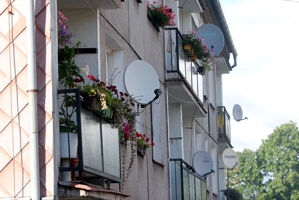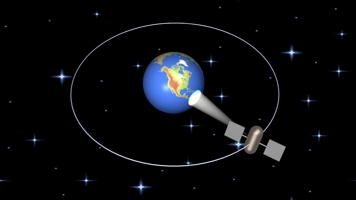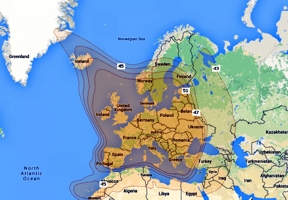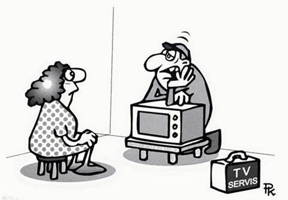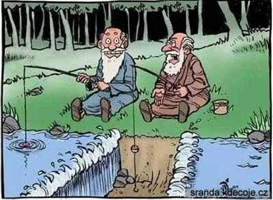Theory of satellite reception, what good is a large satellite dish
When you walk through any Czech town or village, you will often see satellite dishes on the roofs and facades of houses. Their dimensions are usually 60 to 120 cm in diameter. This size in the Czech Republic is enough for reliable permanent reception of satellite broadcasts. This is also the intention of transmitters, which are constantly increasing the transmission power of new satellites, so that a small dish is sufficient to receive such strong signals even in adverse conditions, for example in heavy rain.
Fig. 1 - Ordinary satellite dishes in the Czech Republic. Do you still feel them?
So what good is a large dish close to three meters in size? And why do some enthusiasts have even bigger dishes? The answer can be found in the theory of electromagnetic wave propagation and in the properties of transmitting and receiving antennas.
Simply put, the electromagnetic radiation that satellite broadcasts are can travel in all directions. However, this would be an unnecessary waste of energy, because the intention of satellite broadcasting is to cover the earth's surface with a signal. In all other directions, transmission would disappear in space without any use. Therefore, directional parabolic antennas are used, which direct all transmitted power in one direction. The transmission then has the shape of a cone, the width and thus the covered area of which depends on the quality of the antenna.
Fig. 2 - Ground coverage by satellite signal
Today's modern antennas can already direct transmission to a relatively small part of the earth's surface. For example, in the territory of several neighboring states. This area is covered by the main transmission signal and a small receiving dish is enough to receive it. Such a limitation of the coverage of the rest of the earth's surface is very often used in practice, for example due to limited broadcasting rights.
However, this does not mean that there is no signal coverage outside this area. It's just a lot weaker. The question is whether such a weak signal can be received. Theoretically, yes, if it was possible to amplify this weak signal in some way. And as the slogan popular in all electrical engineering schools says, the antenna is the best amplifier. Therefore, the first step to receiving weak signals is to choose a good antenna. And the gain value of the antenna is directly proportional to its size. And here the use of a large dish begins to make sense. So the simplified answer is that large parabolas are used to receive a signal that is routed outside the receiving station. The farther the main coverage area is from the receiving point, the weaker the signal. However, this dependence is not regular and the possibility of income cannot be simply deduced from it.
An interesting feature of all weak signals is that their strength changes significantly depending on the changes in the environment through which they propagate. Satellite reception involves changes in the physical properties of the atmosphere surrounding the earth's surface. There are many factors influencing it. Air temperature, its humidity, day or night time, season, intensity of sunlight. The wind then causes the air mass to mix with different properties and thus can affect the signal strength very quickly, even within a few tens of minutes.
This means that the reception of weak signals is very unstable, random and not guaranteed. This could give the impression that the listed properties are more or less negative and make weak signal reception unusable.
You don't have a good picture and you won't, because you bought a microwave oven.
But the opposite is true. It is the unpredictability of income conditions that makes weak signal hunting a fun sport. For most people, such an activity may be incomprehensible. Why chase after a broadcast that I will only see for a while, when you can receive thousands of powerful stable programs that I know will work whenever I turn on the TV?
This could be explained, for example, by a comparison with fishing. A fisherman does not sit by a pond or river because he wants to have fish for lunch. He would buy it at the store. Fishing is about something else. About the uncertainty about catching something today. About the knowledge of fish and the environment in which they live. About the fisherman's equipment, his skills and experience. About the coincidence that the fisherman is trying to overcome. The fish itself is not the target. When they manage to catch it, many fishermen look at it, record data about it and release it again. And he starts hunting again.
It is the same with hunting weak satellite signals. It's not about watching a pre-selected show. The goal is just hunting. It overcomes unfavorable conditions with its knowledge and equipment. And patient waiting for the right moment. It is this unpredictability that makes this bizarre activity the right fun.





